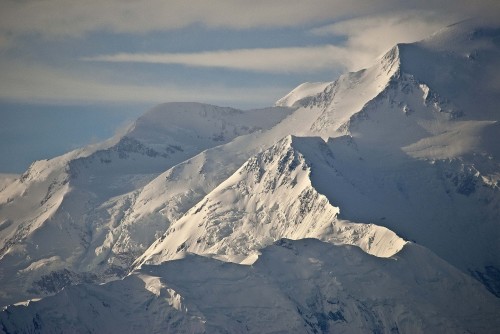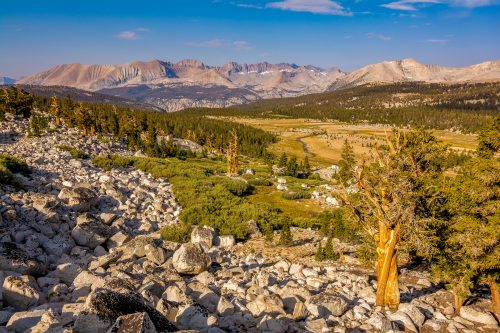 The ocean. The desert. California’s oak-studded coastal hills. They are all beautiful, but each of us has a favorite – a landscape that strums a chord deep inside. For me, it is the glacier-scoured granite expanses of the high Sierra. The occasional tree cover makes for a wide landscape. A wanderer can clearly see distant peaks, and no matter which way he or she may wander, the way is clear. It’s not easy, but when one looks down from the distant view, he is likely to find a gentle stream sliding past a garden of shooting stars and elephant heads. What is this delicate beauty doing amid such rough rocky country?
The ocean. The desert. California’s oak-studded coastal hills. They are all beautiful, but each of us has a favorite – a landscape that strums a chord deep inside. For me, it is the glacier-scoured granite expanses of the high Sierra. The occasional tree cover makes for a wide landscape. A wanderer can clearly see distant peaks, and no matter which way he or she may wander, the way is clear. It’s not easy, but when one looks down from the distant view, he is likely to find a gentle stream sliding past a garden of shooting stars and elephant heads. What is this delicate beauty doing amid such rough rocky country?
Wright Lakes Basin is a perfect example, and this image shows why. Gnarly foxtail pines make a living amid granite boulders; a creek tumbles toward the Kern River; the Great Western Divide as a backdrop. Good Lord.
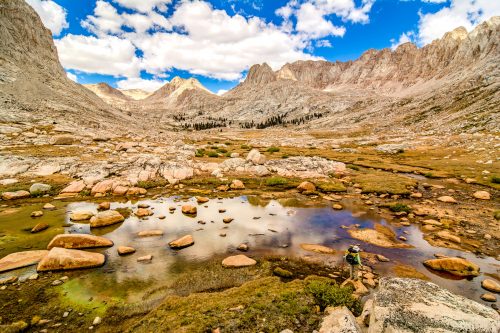
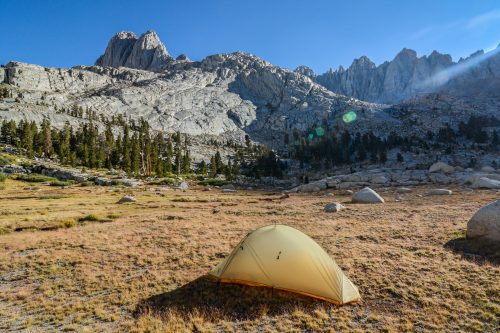
 Wherever we chose to roll out our bags, each of us was enchanted with Miter Basin. The rim of the basin is surrounded by 13,000′ peaks, and each recess above holds a mountain lake with its own unique charm. Beautiful fall reds colored a ground-hugging mosaic of alpine flora. Daybreak songs of a coyote choir echoed up and down the granite walls, adding to the mystery and magic.
Wherever we chose to roll out our bags, each of us was enchanted with Miter Basin. The rim of the basin is surrounded by 13,000′ peaks, and each recess above holds a mountain lake with its own unique charm. Beautiful fall reds colored a ground-hugging mosaic of alpine flora. Daybreak songs of a coyote choir echoed up and down the granite walls, adding to the mystery and magic.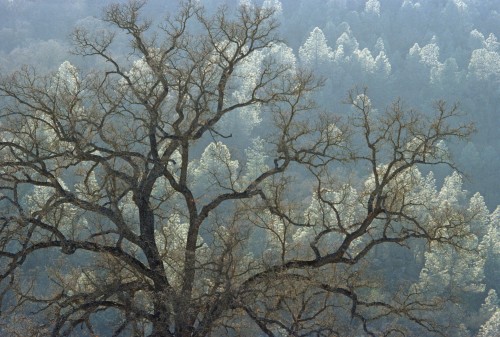 I’m not supposed to say that. It’s not PC. “Digger” is a condescending term that was used by early Eurpoean settlers to characterize some of the Native Americans in the Great Basin and in California who dug in the soil for roots and bulbs. One of our native pines inhereted that moniker as its common name, but the modern day arbiters of politeness say no, it must be changed. So, the digger pine has become the gray pine, or the ghost pine, or the foothill pine. I like digger pine. It is a good reminder of just how mean and insensitive we can be.
I’m not supposed to say that. It’s not PC. “Digger” is a condescending term that was used by early Eurpoean settlers to characterize some of the Native Americans in the Great Basin and in California who dug in the soil for roots and bulbs. One of our native pines inhereted that moniker as its common name, but the modern day arbiters of politeness say no, it must be changed. So, the digger pine has become the gray pine, or the ghost pine, or the foothill pine. I like digger pine. It is a good reminder of just how mean and insensitive we can be. I am never quite sure what the exact recipe is for a great spring wildflower display. While I enjoy botanizing in California’s Coast Range and in the Sierra, I know just enough to be dangerous. I’m likely to concoct some groundless theory and assert it as fact. But based on the significant rainfall we have had thus far, I wonder if this spring could be a memorable one.
I am never quite sure what the exact recipe is for a great spring wildflower display. While I enjoy botanizing in California’s Coast Range and in the Sierra, I know just enough to be dangerous. I’m likely to concoct some groundless theory and assert it as fact. But based on the significant rainfall we have had thus far, I wonder if this spring could be a memorable one. Naturally, rain is a must, but there have been many so-so spring blooms after a wet winter; other factors certainly play a part. It makes sense that during the recent drought years viable wildflower seeds have not received enough water to sprout. Perhaps through the sparse blooms of recent springs that seeds have been accumulating waiting for a winter like we are having now. With an average amount of rainfall during the rest of the California winter, maybe we will see a spring bloom like 1997.
Naturally, rain is a must, but there have been many so-so spring blooms after a wet winter; other factors certainly play a part. It makes sense that during the recent drought years viable wildflower seeds have not received enough water to sprout. Perhaps through the sparse blooms of recent springs that seeds have been accumulating waiting for a winter like we are having now. With an average amount of rainfall during the rest of the California winter, maybe we will see a spring bloom like 1997. Do you buy it? I may be way off base, but it sounds good.
Do you buy it? I may be way off base, but it sounds good.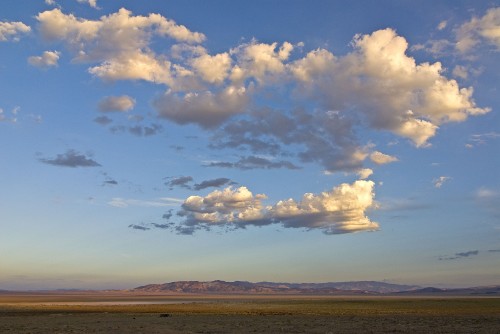
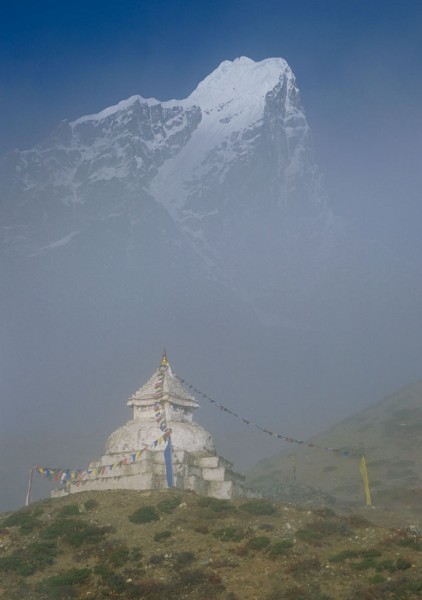 At the Sherpa village of Gokyo (15, 580 ft.), we decided to split up. My sister, Scott, and one porter would decend the Dudh Kosi drainage to its junction with the Imja Khola, then ascend that river to the village of Dingboche. Rather than go down and around with them, I would go with our guide and a porter over Cho La, the pass that connects the two drainages, and we would reunite at Dingboche. Our guide had never been over Cho La, but it all looked straightforward.
At the Sherpa village of Gokyo (15, 580 ft.), we decided to split up. My sister, Scott, and one porter would decend the Dudh Kosi drainage to its junction with the Imja Khola, then ascend that river to the village of Dingboche. Rather than go down and around with them, I would go with our guide and a porter over Cho La, the pass that connects the two drainages, and we would reunite at Dingboche. Our guide had never been over Cho La, but it all looked straightforward.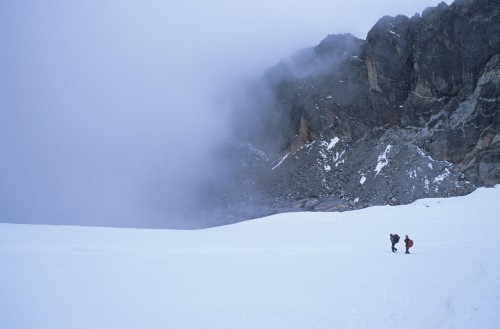
 I envy the sensitive souls that truly feel the energy or “vibe” that pulses through our world. What a gift. Apparently, I am cursed with a thick shell because very few channels come through, and when they do reception is sketchy. But fall is different. Whether I am feeling some distant yearning or it is just my imagination, I have a physical response to fall.
I envy the sensitive souls that truly feel the energy or “vibe” that pulses through our world. What a gift. Apparently, I am cursed with a thick shell because very few channels come through, and when they do reception is sketchy. But fall is different. Whether I am feeling some distant yearning or it is just my imagination, I have a physical response to fall. that an instinct from my distant primal past is awakened in my DNA urging me to start digging a den and prepare for a long winter nap. Granted, it could be my imagination or some other sensation. I have ruled out old age or lasting effects from the 1960’s. No, I’m pretty sure it’s my DNA talking.
that an instinct from my distant primal past is awakened in my DNA urging me to start digging a den and prepare for a long winter nap. Granted, it could be my imagination or some other sensation. I have ruled out old age or lasting effects from the 1960’s. No, I’m pretty sure it’s my DNA talking.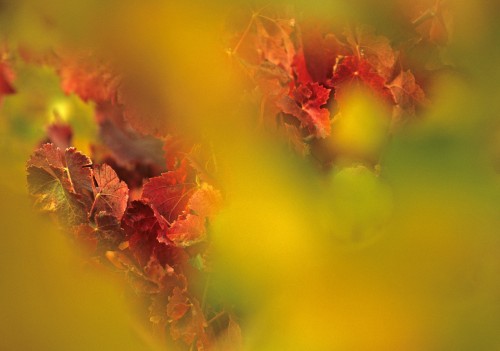
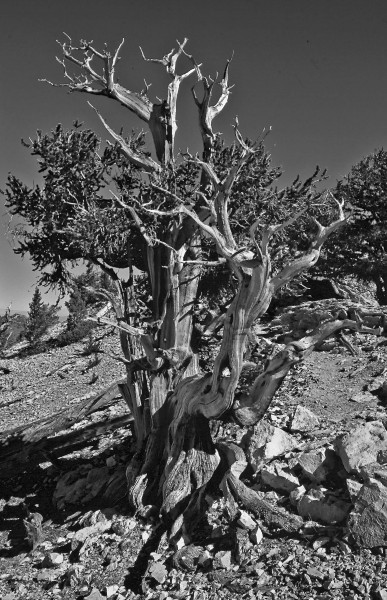
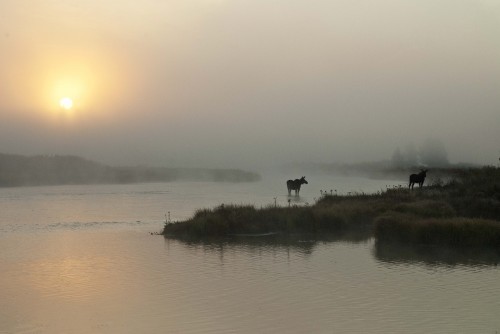 While the lost wildlife of the wild west is fuel for sad reflection and even cynicism, a recent road trip lifted my spirits and gave me a glimpse into that vanished past. Though it is mostly limited to locations circled on the map, within those boundaries there is still beauty and amazing drama happening every day.
While the lost wildlife of the wild west is fuel for sad reflection and even cynicism, a recent road trip lifted my spirits and gave me a glimpse into that vanished past. Though it is mostly limited to locations circled on the map, within those boundaries there is still beauty and amazing drama happening every day.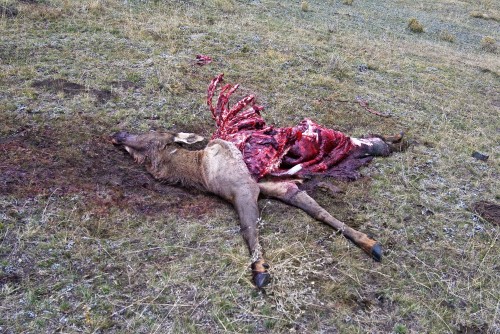 It wasn’t there when we drove through the Lamar Valley the day before, so we knew it happened last night. An elk carcass lay near the road, its chest cavity empty and its ribs picked clean. As I stared at the scene, I shuddered at visions of the drama that occurred right here only hours before. At the prospect of seeing one of the culprits, we walked the open slopes a short distance away. Sure enough, a wolf pranced along the top of the next knoll. I can’t say for sure, but he seemed to exude a cocky self-assurance and the satisfaction that comes from a full stomach.
It wasn’t there when we drove through the Lamar Valley the day before, so we knew it happened last night. An elk carcass lay near the road, its chest cavity empty and its ribs picked clean. As I stared at the scene, I shuddered at visions of the drama that occurred right here only hours before. At the prospect of seeing one of the culprits, we walked the open slopes a short distance away. Sure enough, a wolf pranced along the top of the next knoll. I can’t say for sure, but he seemed to exude a cocky self-assurance and the satisfaction that comes from a full stomach.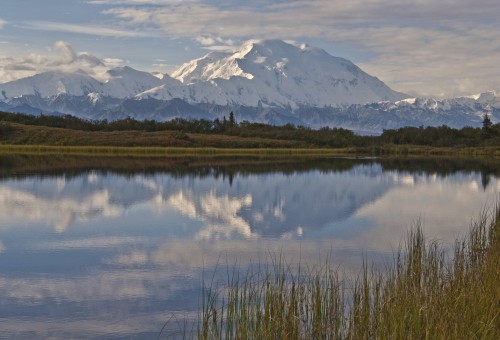 Stop! Can I get off?
Stop! Can I get off?